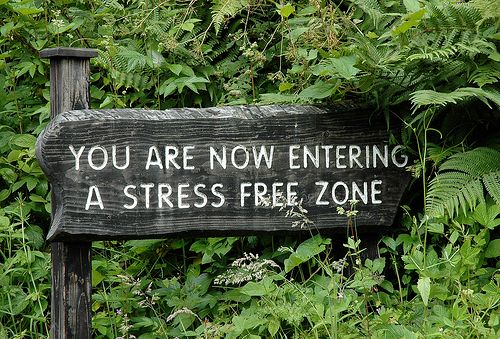David Cay Johnston is a Pulitzer Prize winning journalist and bestselling author whose recent work explores the causes and conditions of inequality in the United States. At the Syracuse University College of Law he’s a distinguished visiting lecturer, where he teaches the history of property, taxation, regulation, and commerce. He’s written a trilogy of books on our pro-corporate tax system; the most recent: The Fine Print: How Big Companies Use “Plain English” to Rob You Blind. He’s also editing the forthcoming book Divided: The Perils of Our Growing Inequality and writes regular columns for Al Jazeera America, Tax Analysts, and a weekly piece for Newsweek.
September 4, 2014 archive
Sep 04 2014
The Breakfast Club (Dancing in September)
Welcome to The Breakfast Club! We’re a disorganized group of rebel lefties who hang out and chat if and when we’re not too hungover we’ve been bailed out we’re not too exhausted from last night’s (CENSORED) the caffeine kicks in. Join us every weekday morning at 9am (ET) and weekend morning at 10:30am (ET) to talk about current news and our boring lives and to make fun of LaEscapee! If we are ever running late, it’s PhilJD’s fault.

This Day in History
Crisis unfolds in Little Rock, Ark. over racial integration in schools; Ford rolls out its ill-fated Edsel; Attorney William Kunstler dies; Mark Spitz sets Olympic gold record; Singer Beyonce born.
Breakfast Tunes
Sep 04 2014
On This Day In History September 4
Cross posted from The Stars Hollow Gazette
This is your morning Open Thread. Pour your favorite beverage and review the past and comment on the future.
Find the past “On This Day in History” here.
September 4 is the 247th day of the year (248th in leap years) in the Gregorian calendar. There are 118 days remaining until the end of the year.
On this day in 1886, Apache chief Geronimo surrenders to U.S. government troops. For 30 years, the mighty Native American warrior had battled to protect his tribe’s homeland; however, by 1886 the Apaches were exhausted and hopelessly outnumbered. General Nelson Miles accepted Geronimo’s surrender, making him the last Indian warrior to formally give in to U.S. forces and signaling the end of the Indian Wars in the Southwest.

While Geronimo (Chiricahua: Goyaale, “one who yawns”; often spelled Goyathlay or Goyahkla in English) said he was never a chief, he was a military leader. As a Chiricahua Apache, this meant he was one of many people with special spiritual insights and abilities known to Apache people as “Power”. Among these were the ability to walk without leaving tracks; the abilities now known as telekinesis and telepathy; and the ability to survive gunshot (rifle/musket, pistol, and shotgun). Geronimo was wounded numerous times by both bullets and buckshot, but survived. Apache men chose to follow him of their own free will, and offered first-hand eye-witness testimony regarding his many “powers”. They declared that this was the main reason why so many chose to follow him (he was favored by/protected by “Usen”, the Apache high-god). Geronimo’s “powers” were considered to be so great that he personally painted the faces of the warriors who followed him to reflect their protective effect. During his career as a war chief, Geronimo was notorious for consistently urging raids and war upon Mexican Provinces and their various towns, and later against American locations across Arizona, New Mexico, and western Texas.
snip
In 1886, General Nelson A. Miles selected Captain Henry Lawton, in command of B Troop, 4th Cavalry, at Ft. Huachuca and First Lieutenant Charles B. Gatewood to lead the expedition that captured Geronimo. Numerous stories abound as to who actually captured Geronimo, or to whom he surrendered, although most contemporary accounts, and Geronimo’s own later statements, give most of the credit for negotiating the surrender to Lt. Gatewood. For Lawton’s part, he was given orders to head up actions south of the U.S.-Mexico boundary where it was thought Geronimo and a small band of his followers would take refuge from U.S. authorities. Lawton was to pursue, subdue, and return Geronimo to the U.S., dead or alive.
Lawton’s official report dated September 9, 1886 sums up the actions of his unit and gives credit to a number of his troopers for their efforts. Geronimo gave Gatewood credit for his decision to surrender as Gatewood was well known to Geronimo, spoke some Apache, and was familiar with and honored their traditions and values. He acknowledged Lawton’s tenacity for wearing the Apaches down with constant pursuit. Geronimo and his followers had little or no time to rest or stay in one place. Completely worn out, the little band of Apaches returned to the U.S. with Lawton and officially surrendered to General Miles on September 4, 1886 at Skeleton Canyon, Arizona.
The debate still remains whether Geronimo surrendered unconditionally. Geronimo pleaded in his memoirs that his people who surrendered had been misled: his surrender as a war prisoner was conditioned in front of uncontested witnesses (especially General Stanley). General Howard, chief of Pacific US army division, said on his part that his surrender was accepted as a dangerous outlaw without condition, which has been contested in front of the Senate.
In February, 1909, Geronimo was thrown from his horse while riding home, and had to lie in the cold all night before a friend found him extremely ill. He died of pneumonia on February 17, 1909 as a prisoner of the United States at Fort Sill, Oklahoma. On his deathbed, he confessed to his nephew that he regretted his decision to surrender. He was buried at Fort Sill in the Apache Indian Prisoner of War Cemetery
Sep 04 2014



